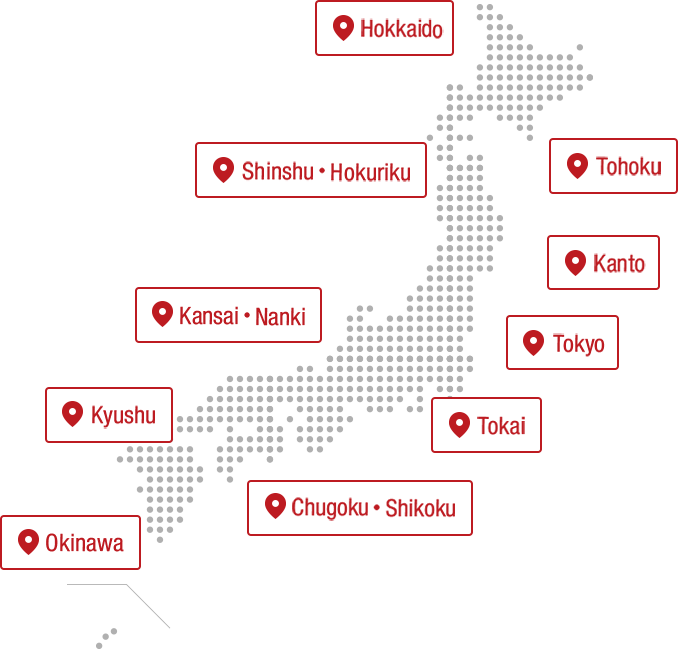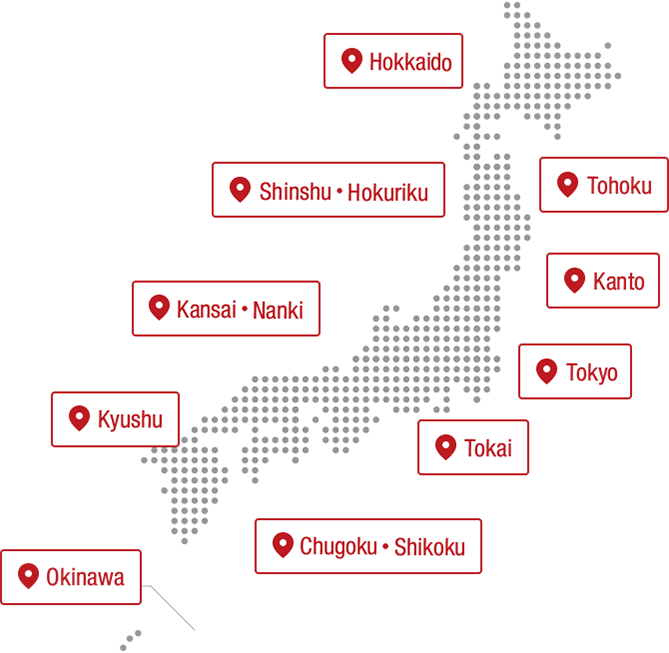
Ai Nishimura
Administrator of the blog "My Diary," which began in 2004. A writer who has traveled to all 47 prefectures and loves local culture and history.
Author of Shimane's "Geography, Place Names, and Maps" Mysteries (Jitsugyo no Nihon Sha), My Town is the "Number One in Japan" Dictionary (PHP Institute), and Prefectures Explained in Neko Neko Japanese History (Jitsugyo no Nihon Sha). Official blogger for Suntory Gourmet Guide, official top user for Retty, and official platinum blogger for Excite.
- A tour of the history and modern appeal of brewing in Tatsuno, the home of light soy sauce
- Ibonoito, a somen brand that supports Japanese food culture
- Tatsuno, the Mecca of Leather: World-renowned Craftsmanship and Culture
- The charm of the historic landscape of Tatsuno, Tatsuno City, which has been preserved for generations
A tour of the history and modern appeal of brewing in Tatsuno, the home of light soy sauce
Tatsuno City is the number one producer of "light soy sauce" in Japan.
The production method for light soy sauce is similar to that of dark soy sauce, but rice is generally used in addition to wheat, soybeans, and salt. One of its characteristics is that it has a higher salt concentration than dark soy sauce, despite its light color. Light soy sauce goes well with dashi, and is mainly used in Kansai region cuisine that makes the most of the flavor of the ingredients, and even a small amount of it creates a delicious synergistic effect with the dashi.
The evolution of soy sauce has progressed alongside the deepening of Japanese food culture.
Around 1660, the revolutionary "usukuchi soy sauce" was born in Tatsuno City, Hyogo Prefecture. As a producer of soybeans and wheat, and because it was easy to obtain salt from the Seto Inland Sea, the city developed into a major soy sauce production area. This innovative seasoning brought a new flavor to Japanese food culture.
Brewing techniques that take advantage of the characteristics of each region have produced a variety of soy sauces, such as dark soy sauce, tamari soy sauce, and seasoned soy sauce, which have become the foundation of today's rich food culture.
The defining feature of usukuchi soy sauce is its light color, as its name suggests. It does not spoil the color of the food, but rather enhances its visual beauty. Initially consumed in Tatsuno, usukuchi soy sauce became popular among chefs in the Kansai region, especially Kyoto. Its compatibility with Kyoto cuisine, which places importance on appearance, helped it to become more widespread.
At its peak in the Meiji era, there were around 80 soy sauce breweries, and currently there are seven soy sauce manufacturers in the city. Among them, Higashimaru Shoyu Co., Ltd., headquartered in the city, holds the top share in the nation for the production of light soy sauce.
There is a facility in the city where you can have fun learning about the history of usukuchi soy sauce.
The Usukuchi Tatsuno Soy Sauce Museum opened in November 1979 as the first soy sauce museum in Japan, occupying the former Higashimaru Soy Sauce headquarters building built in 1932 (Showa 7). For an admission fee of just 10 yen, you will open the door to the timeless story of soy sauce.
Thousands of soy sauce brewing equipment and documents from the Edo period are on display, and the museum also features replicas of giant preparation vats and koji rooms, allowing visitors to see the wisdom and ingenuity of our ancestors and the origins of light soy sauce production, and to get a new sense of the profound depth of Japanese cuisine.
The next place we visited was the "Shoyu no Sato Taisho Romankan." This is the building of the former Tatsuno Soy Sauce Trade Association, and is a charming building that strongly retains the architectural style of the Taisho period. Inside, the history of soy sauce and the industry of Tatsuno are explained.
The adjacent building is a renovated wooden soy sauce factory built in the Taisho period called "Kura Terrace Tatsuno." It is a restaurant where you can enjoy lunches made with plenty of fermented foods, as well as soy sauce sweets.
The popular "Locally Produced Tatsuno Fermented Lunch" is a healthy meal that uses plenty of fermented seasonings, including brewed soy sauce, and does not use any animal products such as meat or fish. It includes side dishes made with soy products and dried foods, centered around locally grown, pesticide-free outdoor vegetables. There is no meat or fish in the main dish, and the contents change every 2-3 weeks. The vegetable side dishes are changed irregularly to use seasonal vegetables. It is also nice that there are several types of soy sauce carefully selected from soy sauce breweries in the city available for use with the homemade oboro tofu and raw egg rice. If you like the soy sauce you tried, you can purchase it at the souvenir shop next door.
In Tatsuno, known as the town of soy sauce, you can have a trip that goes beyond mere sightseeing and provides a deeper learning experience. This experience may deepen your interest in everyday food and even lead to new tastes. Why not step into the world of soy sauce and experience its charm to the fullest?
Usukuchi Tatsuno Soy Sauce Museum
| address | : | 54-1 Ote, Tatsunocho, Tatsuno-shi, Hyogo Prefecture |
|---|---|---|
| phone | : | 0791-63-4573 |
| Opening hours | : | 9:00~17:00 |
| closing day | : | Mondays New Year's holidays |
| URL | : | https://www.higashimaru.co.jp/enjoy/museum/ |
Soy Sauce Village Taisho Romance Museum
| address | : | 126 Kamikajo, Tatsuno-cho, Tatsuno City, Hyogo Prefecture |
|---|---|---|
| phone | : | 0791-72-8871 |
| Opening hours | : | 10:00~17:00 |
| closing day | : | Monday |
| URL | : | https://www.city.tatsuno.lg.jp/machinami/taishouroman.html |
Kura Terrace Tatsuno
| address | : | 126 Kamikajo, Tatsuno-cho, Tatsuno City, Hyogo Prefecture |
|---|---|---|
| phone | : | 0791-72-9291 |
| Opening times | : | 10:00~17:00 |
| Closed Day | : | Monday |
| URL | : | https://kuraterrace.jp/ |
Yokoo Shoten Tatsuno Direct Sales Store (in front of JR Higashi-Hashisaki Station)
| address | : | 506-1 Daijuji, Kamioka-cho, Tatsuno-shi, Hyogo Prefecture |
|---|---|---|
| phone | : | 0791-65-0191 |
| Opening times | : | 10:00~16:00 |
| Closed Day | : | Wednesday Saturday Sunday Holidays |

Learn and experience soy sauce in the town of Usukuchi soy sauce

A base for the Tatsuno region that uses the former Tatsuno Soy Sauce Association office and is widely used by local residents

The entrance porch features scratch tiles and arches that were popular during this period, and the interior is reminiscent of that time.

The former factory site will become a cafe restaurant and shop called "Kura Terrace Tatsuno"

A space that uses a wooden factory as it is, where you can feel the history just by being there

Soy sauce and other seasonings are provided at the restaurant.

Healthy lunches use plenty of fermented seasonings

The main dish is a croquette made with Harima region specialty "Harimaru (potato)" and soy sauce koji.

You can try soy sauce with handmade tofu and rice with raw egg

There is also a shop where you can purchase a wide range of Harima region specialties.

You can try different soy sauces at the restaurant and buy the one you like best.

Tatsuno Usukuchi is clear yet rich in flavor.

"Usukuchi Tatsuno Soy Sauce Museum" - a facility where you can learn about Usukuchi soy sauce

Exhibits tools used in soy sauce production from the Edo period to prewar times

The museum collects and exhibits tools that are gradually disappearing, and introduces the work processes of the time.

"Soy sauce is a living thing" Recreating the koji room that promotes fermentation using koji

A hand-drawn authorized dealer sign showing how soy sauce is sold
Ibonoito, a somen brand that supports Japanese food culture
Ibonoito somen noodles, which originated in Tatsuno City, have a 600-year tradition dating back to the Muromachi period and boast the largest somen production volume in Japan. Known for its history and quality, it is a representative somen brand in Japan in both name and reality.
It may be interesting to know that "Ibonoito" does not refer to a product produced in one factory, but is a trademark for hand-pulled somen noodles produced by about 400 producers in the Nishi-Harima region. It is a brand name given only to products that have passed the strict quality inspection by the Hyogo Prefecture Hand-pulled Somen Cooperative Association, and is a sign of trust.
We take a closer look at Banshu hand-pulled somen Ibonoito, which is the number one produced somen in Japan and is considered one of the three great somen varieties.
Somen noodle making begins early in the morning during the cold season from October to April.
There are 11 steps, each of which is carried out in accordance with traditional methods that have been handed down over the years.
The ingredients are wheat flour, salt, and water. When making noodles from these ingredients, it is necessary to utilize the gluten contained in the wheat and stretch it so that it does not break. For this reason, the noodles are stretched and rested (aged) multiple times, and eventually stretched to nearly 2 meters.
The deliciousness of the noodles is achieved through a variety of processes.
The chewy texture that is unique to Ibonoito noodles is created by stretching and combining the noodle bands cut from the dough. As a result, 24 noodle bands are combined into one, and as they are aged and stretched, they develop into noodles with a firm texture and elasticity.
Above all, "firmness" is important in noodle dishes. To achieve this, the noodles are not simply stretched, but are twisted. At this time, oil is applied to prevent the noodles from drying out and sticking together, and the noodles are not exposed to air during aging, allowing them to ripen slowly and carefully.
The "high-grade (red belt)" that we can generally buy at supermarkets is 0.7-0.9 mm thick, weighs 50g per bundle, and has a manufacturer's number given to each producer on the belt. Everything from the manufacturing method, storage management, and standards are checked and controlled by the union and inspection instructors, and only the ones that are certified as Ibonoito are delivered to us, the consumers.
At the "Ibo-no-Ito Somen Museum," you can learn about the history and manufacturing process of hand-pulled somen noodles, and also taste a variety of original somen dishes. The shop sells Ibonoito somen noodles, hiyamugi (cold wheat noodles), udon noodles, and other local specialties.
In connection with the EXPO 2025 Osaka-Kansai Expo (Osaka Expo), which will be held for 183 days from April 13, 2025, Hyogo Prefecture is hosting the Hyogo Field Pavilion, which allows visitors to "leave the Osaka Expo site and actually see and experience the Hyogo region (field)." A special program is also being held in Somen no Sato, where visitors can experience Ibonoito.
In Tatsuno City, you can experience a variety of somen-related things, including restaurants that serve somen noodles, the unique Somen Shrine (official name: Omiwa Shrine) that is unique to this area, and shops that sell somen-themed sweets.
Rather than simply eating somen, you can enjoy it from a variety of angles to discover new charms and appreciate its appeal on a deeper level.
It was a trip that allowed us to appreciate the depth of somen noodles, a summer staple, and feel the joy of new discoveries through this experience.
Ibo-no-Ito Somen Museum
| address | : | 56 Okumura, Kamioka-cho, Tatsuno-shi, Hyogo Prefecture |
|---|---|---|
| Opening times | : | 9:00-17:00 (entry to exhibition room until 16:30) Restaurant Ann 11:00-21:00 (last orders 20:00) |
| Closed Day | : | Mondays (or the following day if Monday is a public holiday), New Year's holiday |
| URL | : | https://www.ibonoito.or.jp/soumennosato/ |
Hyogo Field Pavilion
Somen Shrine (Omiwa Shrine)
| address | : | 794-5 Daijuji, Kamioka-cho, Tatsuno-shi, Hyogo Prefecture |
|---|
Daikokuya Tanji
| address | : | 331-1 Hashisaki, Shingu-cho, Tatsuno-shi, Hyogo Prefecture |
|---|---|---|
| phone | : | 0791-75-2118 |
| Opening times | : | 8:00~17:00 |
| Closed Day | : | Wednesday |
| URL | : | https://tatsuno-daikokuya.co.jp/ |

"Ibonoito" made in the Nishiharima region is the number one producer of hand-pulled somen noodles in Japan.

Visiting a somen noodle factory early in the morning - Shinsuke Tanaka, Tanaka Seimensho

The process of twisting and stretching the noodles while applying oil.

The noodles are left to ripen overnight. From here, they are stretched even further to make them longer and thinner.

A stick called a "kuda" is inserted into the hole in the "hata" and the noodles are stretched out to a length longer than the person's height.

Shinsuke Tanaka separates the noodles using two sticks called "hashi" to prevent them from sticking together.

After drying, cutting, weighing, bundling, and other processes, the product is packed into boxes.

The photo shows a premium black belt. It is thinner than the higher grade, at 0.65 to 0.7 mm.

Learn about the history and manufacturing process of hand-pulled somen noodles at the Ibonoito Museum Somen no Sato, where you can also taste them.

A clear display of the manufacturing process from the days when everything was done by hand

Experience how to prepare noodles at the Hyogo Field Pavilion, a venue connected to the Expo

A hands-on program that includes a guided tour of the building and the opportunity to actually make somen noodles.

A comparison of somen noodles from the experience program. The photo shows black belt special grade and red belt premium grade.

There is also a restaurant where you can enjoy somen dishes. The photo shows "somen sushi rolls."

Somen Shrine, worshipped as the guardian deity of somen making

It has a splendid shrine building that was renovated in 2004, and the picture painted by local high school students and others are displayed in Ema hall.

"Somen Monaka" sold by "Daikokuya Tanji", a Japanese and Western confectionery store

In addition to manufacturing noodles, there are many companies that also pack and sell them.

Yokoo Shoten has a wide range of original products, including frozen Ibonoito that is easy to eat and Ibonoito gifts.

There is a direct sales store near JR Higashi-Hashisaki Station, so it is easily accessible.
The contents published are accurate at the time of publication and are subject to change.











